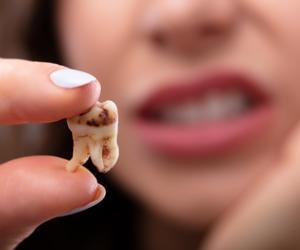“What are the risks of using teeth whitening strips?”
I want to use teeth whitening strips. What are the risks of using teeth whitening strips?
5 Answers
DentistDentist
Teeth whitening strips can be effective, but there are a few risks to consider:
1. **Tooth Sensitivity**: The bleaching agents can cause temporary tooth sensitivity, especially to hot or cold foods and drinks.
2. **Gum Irritation**: If the strips come into contact with your gums, they can cause irritation or discomfort.
3. **Uneven Whitening**: Whitening strips might not work evenly, especially if you have dental restorations like fillings or crowns, as they don’t whiten those materials.
4. **Overuse**: Using the strips too often can damage your enamel, leading to weakened teeth and increased sensitivity.
5. **Not Suitable for All Teeth**: People with certain dental conditions (e.g., cavities, gum disease) should avoid whitening strips, as they can make these issues worse.
Make sure to follow the instructions carefully and consult your dentist if you're unsure whether they’re right for you.
1. **Tooth Sensitivity**: The bleaching agents can cause temporary tooth sensitivity, especially to hot or cold foods and drinks.
2. **Gum Irritation**: If the strips come into contact with your gums, they can cause irritation or discomfort.
3. **Uneven Whitening**: Whitening strips might not work evenly, especially if you have dental restorations like fillings or crowns, as they don’t whiten those materials.
4. **Overuse**: Using the strips too often can damage your enamel, leading to weakened teeth and increased sensitivity.
5. **Not Suitable for All Teeth**: People with certain dental conditions (e.g., cavities, gum disease) should avoid whitening strips, as they can make these issues worse.
Make sure to follow the instructions carefully and consult your dentist if you're unsure whether they’re right for you.
Teeth whitening strips if used as indicated by the physician based on the type of whitening system used will not cause much of a side effect. If used on regular intervals without a desensitizing tooth paste and relief gels applied using a whitening tray then you could experience sensitivity issues with your treated teeth.
Also there is a risk of staining your teeth if you drink red wine or black coffee immediately following a whitening treatment.
Also there is a risk of staining your teeth if you drink red wine or black coffee immediately following a whitening treatment.
Teeth whitening strips can cause side effects such as gum irritation, tooth sensitivity, and enamel damage. Gum irritation * The chemicals in whitening strips can irritate gums, especially if you already have sensitive teeth * Wearing strips while napping can cause gum discomfort Tooth sensitivity * Whitening strips can expose sensitive layers of teeth * Brushing too soon before or after using strips can increase sensitivity Enamel damage * Overusing whitening strips can erode tooth enamel, which protects teeth from decay * This damage can make teeth weak and more likely to break Uneven whitening * Strips may not cover all teeth evenly, leading to unevenly white teeth Allergic reactions * Some people may be allergic to the ingredients in whitening strips Other risks * Tooth damage, especially if you have gum disease or cavities * Damage to nerves if strips touch exposed tooth roots * Chewing and speaking problems Safety tips * Consult a dentist before using whitening strips * Don't wear strips while sleeping * Use a fluoride-containing toothpaste if whitening at home * Wait at least 30 minutes after brushing before applying strips * Rinse mouth with water after removing strips before brushing again
Teeth whitening strips are generally safe but can carry some risks, especially with improper use. Potential risks include:
1. Tooth Sensitivity: Whitening agents can temporarily make teeth more sensitive to hot, cold, or sweet foods.
2. Gum Irritation: Strips that come into contact with the gums may cause irritation or burning sensations.
3. Enamel Damage: Overuse or prolonged application can erode enamel, increasing the risk of cavities and sensitivity.
4. Uneven Whitening: Improper placement can result in uneven color, especially around dental work like crowns or fillings.
5. Increased Risk with Preexisting Conditions: Individuals with cavities, gum disease, or worn enamel should consult a dentist before use.
Always follow the manufacturer’s instructions and consult your dentist if you have concerns or preexisting dental issues.
1. Tooth Sensitivity: Whitening agents can temporarily make teeth more sensitive to hot, cold, or sweet foods.
2. Gum Irritation: Strips that come into contact with the gums may cause irritation or burning sensations.
3. Enamel Damage: Overuse or prolonged application can erode enamel, increasing the risk of cavities and sensitivity.
4. Uneven Whitening: Improper placement can result in uneven color, especially around dental work like crowns or fillings.
5. Increased Risk with Preexisting Conditions: Individuals with cavities, gum disease, or worn enamel should consult a dentist before use.
Always follow the manufacturer’s instructions and consult your dentist if you have concerns or preexisting dental issues.






